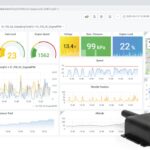Cruise Control Auto, a common feature in modern vehicles, offers drivers the ability to maintain a constant speed without needing to continuously press the accelerator pedal. This automated system enhances comfort on long journeys by reducing foot fatigue and stress. Beyond comfort, cruise control auto significantly improves fuel efficiency. Maintaining a steady speed, as opposed to frequent acceleration and deceleration, minimizes energy consumption, potentially saving drivers up to 60% on fuel compared to inconsistent driving habits. This automatic speed regulation allows the engine to operate at its most efficient RPM, optimizing fuel usage.
A significant advancement in cruise control technology is adaptive cruise control (ACC). This intelligent system builds upon the foundation of traditional cruise control by incorporating forward-mounted sensors to monitor the distance to the vehicle ahead. ACC not only maintains a pre-set speed but also automatically adjusts the vehicle’s speed to maintain a safe following distance. If the leading vehicle slows down, ACC will engage the engine braking system to decelerate and maintain the chosen gap. Conversely, if the lead vehicle accelerates or changes lanes, ACC will smoothly accelerate back to the set speed. This feature significantly enhances safety and reduces driver workload, especially in heavy traffic or on long highway drives.
While ACC represents a step towards autonomous driving, it’s crucial to understand that it doesn’t equate to fully self-driving capabilities. Drivers using ACC must remain attentive, keep their hands on the wheel, and be prepared to take control of the vehicle at any moment. ACC acts as a driver-assist feature, not a replacement for an attentive and engaged driver. The system enhances safety and convenience but still requires active driver participation.
